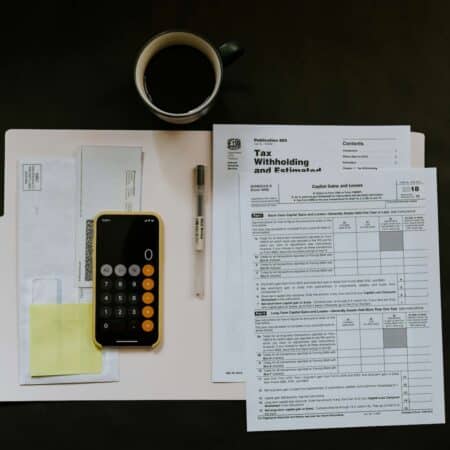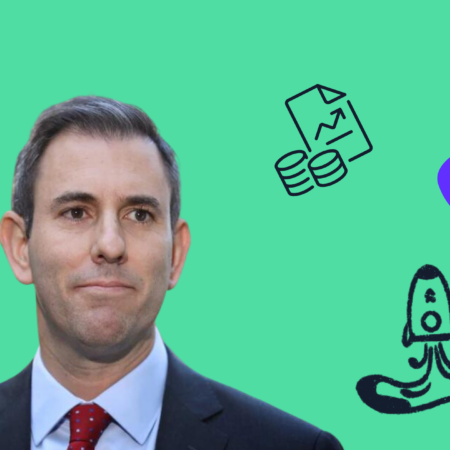The 2024 Federal Budget: what you need to know
Jim Chalmers, Treasurer of Australia, is back on our screens and he’s handed down the 2024 Federal Budget. We’ll continue updating this article as more details come to light, but here’s what we’ve gleaned from the announcement so far.
Helping with the cost of living, building more homes for Australia and investing more in the future of the country are listed by Chalmers as some of the key focuses of this budget. Strengthening medicare and the care economy and “responsible economic management” – particularly in regards to inflation – are the other stand outs.
Cost of Living
Or cozzie livs as the 2023 word of the year would say. The topic at every water cooler: the astronomical and unrelenting cost of living in Australia. The anticipation for how the Labor government intends to provide relief has been high – here are the broad strokes which span across numerous areas but are all intended to address the overall cost of living:
- $ 3.5 billion in energy bill relief. Every household will receive an energy bill rebate of $300 from July 1 2024. Small businesses will be eligible to receive $325
- $3 billion to be invested for cheaper medicines and towards the funding of community pharmacies
- The cost of PBS prescriptions will be frozen for everyone for two years, with the maximum price being $31.60
- The same will apply to pension and concession card holders who will enjoy the freeze for five years with a maximum cost of $7.70 for PBS prescriptions
- A further $3.4 billion invested to add new medicines onto the PBS
- Chalmers made a vague comment about supermarket prices and competitors being on the hit list to address the cost of living, with the watchdog getting more involved. We’re sure there are more details to come here.
Chalmers listed the previously announced tax cuts to be their biggest measure in addressing the cost of living.
Tax Cuts
This one’s something we already knew about. As of July 1, most Australians will receive a tax cut. Here are the updated tax brackets, reflecting the latest changes from the ATO:
| Tax rate | 2023-24 | Original 2024-25 | New 2024-25 rates |
| 0% | $0-$18,200 | $0-$18,200 | $0-$18,200 |
| 16% | $18,201 – $45,000 | ||
| 19% | $18,201 – $45,000 | $18,201 – $45,000 | |
| 30% | $45,001 – $200,000 | $45,001 – $135,000 | |
| 32.5% | $45,001 – $120,000 | ||
| 37% | $120,000 – $180,000 | $135,001 – $190,000 |
For more detail on tax cuts, head to our previous article here.
Housing
Clearly a focal point for the Albanese government, Chalmers announced the following:
- $1.9 billion to increase the maximum rates of commonwealth rental assistance by 10%, on top of the 15% announced in the last budget
- A lofty aim of building 1.2 million homes over five years from July 1, the majority of these being social and affordable housing, student housing and remote housing in the NT
- Funding will be doubled to address homelessness
- The implementation of a significant funding increase for accommodations for women and children fleeing violence
Student Debt
HELP debt stings for many of our clients when it comes to tax time. If we had a penny for everytime someone said words to the effect of “I could’ve sworn I’d paid off more than that” then we might be retiring early. After last year’s increase to 7.1% interest on all HELP debts (ouch), this budget intends on reducing that number to be in line with either the Customer Price Index or the Wage Price Index – whichever of the two is lower. This would’ve meant 3.2% rather than 7.1% last year.
This change will be backdated to June 1 2023.
The legislation will wipe $1,200 off an outstanding HELP debt of $26,500 – which is the national average.
More information on student debt relief here.
Education
A smaller focal point of the budget however measures that are certainty worthy of a mention:
- $89 million for 20,000 further VET and vocational places for trades and other vital roles
- $350 million invested into fee-free university courses
- Nursing, social work and teachers will be among students who will now receive payment for their workplace placements.
Business
A clear gap in this year’s budget; business didn’t get much of a mention. This is what we picked up on (with a bit of defence thrown in there because that’s how Chalmers presented it!):
- $22.7 billion for a future ‘Made in Australia’ package which will aim to attract more global investment in Australian businesses, work towards positioning ourselves as a renewable energy ‘super power’, increase our defence capability and economic security
- $13.7 billion in production tax incentives for green energy
- $50.3 billion over the next decade towards our defence capabilities.
And a big ‘hooray!’ for the fact that the $20,000 instant asset write-off scheme is being extended ‘til June 30 2025.
What the 2024-25 Federal Budget means for small business in Australia?
We’ve included these in the relevant sections above but just so it’s all in one place…
- Tax relief and incentives: small businesses can benefit from the $20,000 instant asset write-off scheme extended until June 30, 2025
- Energy rebates: eligible small businesses will receive a $325 rebate on energy bills, helping to alleviate operational costs
- Investment opportunities: the ‘Made in Australia’ package and green energy incentives provide opportunities for small businesses to engage in new projects and markets.
Future Advisory’s accounting experts have collaborated with numerous small business owners to analyse their how federal budgets apply to them and to identify whether additional opportunities exist as a result.
The Care Economy
This umbrella term refers to a number of areas in desperate need of funding and reform such as the NDIS, Medicare, aged care and childcare. Chalmers notes that the majority of people working (either paid or unpaid) in the care economy are women and that the following measures are intended to provide much needed support for them in the workplace.
- An injection of $361 million to strengthen the mental healthcare system, providing free support to 150,000 Australians per year via a national online service
- $2.2 billion will go to aged care investment and further implementation of the royal commission findings
- $531 million for another 24,000 home care packages giving more Australians the option of staying at home for longer, and giving some relief to our over-extended aged care facilities
- The NDIS will receive $469 million and continue working with the disability community to crack down on exploitation within the system
- Childcare workers, early learning educators and aged care workers will be getting well deserved wage increases
- $19 million to support carers in how and when they work
- $56 million to improve access to women’s health services.
And finally a point that didn’t neatly fit into any of the above sections, but one worth celebrating: $1.1 billion will fund superannuation for government funded parental paid leave, starting July 2025. This will help to continue to reduce the gender gap. Big yes!
FAQ
What date is the federal budget 2024?
The 2024 Australian federal budget was delivered on Tuesday, 14 May 2024. The budget outlines the government’s spending plans and revenue projections, impacting various sectors and shaping Australia’s economic policies.
Has the 2024 federal budget been passed?
The 2024 federal budget has been delivered and whilst some of the policies have already been passed, many have a ways to go. As always, Federal Budgets passed down by the incumbent government may start being implemented but certain policies are halted or scrapped altogether if a new government is elected.
What is the fiscal policy in Australia?
Fiscal policy in Australia involves the government’s use of taxation and spending to influence the economy. Its goals are to promote economic growth, manage inflation, reduce unemployment, and maintain public finance stability. Key components include:
– Government Spending: Allocating funds to sectors like healthcare, education, and infrastructure.
– Taxation: Adjusting tax rates to control demand and redistribute income.
Budget Balance: Aiming for a balanced budget over the economic cycle, with surpluses during growth periods and deficits during downturns.
What is the Mid-Year Economic and Fiscal Outlook ?
The MYEFO, released in December, updates the economic and fiscal outlook since the May federal budget. It includes:
– Economic Forecasts: Revised projections for GDP growth, employment, and inflation.
– Fiscal Position: Updated estimates of government revenue, spending, and budget balance.
– Policy Updates: Information on new or adjusted policies and their fiscal impacts.
– Debt and Deficit Projections: Updated projections for government debt and budget deficits or surpluses.
The MYEFO ensures fiscal policy remains on track and provides transparency on the government’s financial position.













